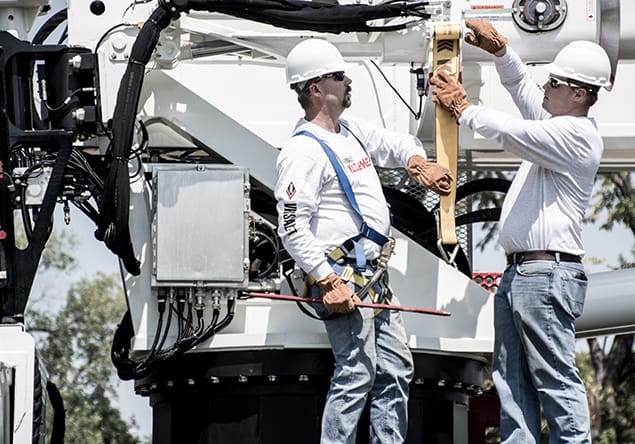Failing to adopt the latest innovations can result in rising operational costs, compliance issues, and increased downtime – putting your business at a competitive disadvantage.In this blog, we’ll explore the most important innovations shaping today’s utility truck design – and how to identify the features that truly make a difference on the job.
Rising fuel costs and environmental regulations are driving the need for more efficient, cleaner trucks. Fortunately, utility truck design is meeting that demand.
Energy-efficient design is only part of the equation. Smart technologies are now giving utility truck fleets new ways to monitor, manage, and optimize their vehicles like never before. Here’s what you need to know about the digital revolution on the road.

Today’s utility trucks are as smart as they are strong. From data collection to predictive maintenance, integrated tech features help maximize uptime and performance.
Smart features are making fleets more efficient, but the need for adaptability remains high. Next, let’s explore how modular designs are helping utility trucks tackle multiple job types with ease.

Versatility is key for utility trucks, especially when serving multiple job functions. Modern design emphasizes modularity and custom-fit solutions.
Adaptable truck bodies are helping companies work smarter – but there’s also a growing emphasis on making the entire truck lifecycle more environmentally responsible. Let’s take a closer look at how sustainable materials and practices are shaping the future.
Reducing environmental impact goes beyond energy efficiency – it also includes smarter use of materials and manufacturing practices.
As innovation continues to drive sustainable growth, staying ahead of these trends is critical for businesses that want to lead rather than follow. If sustainability is part of your company’s strategy, you can learn more about our ESG approach here.

Explore related posts to learn more about Versalift’s products, customer stories, industry updates, and how we support essential infrastructure through innovation and service.
Advanced safety features like TruGuard™ and SlopeMax.
Our QA247 is the foundation of every product we assemble.
Heavyweight Performance – Best in class payloads and lighter chassis options.
We design our products with easy maintenance in mind.

Have questions about our bucket trucks or need help finding the right solution? Fill out the form below, and a member of our team will get back to you shortly.